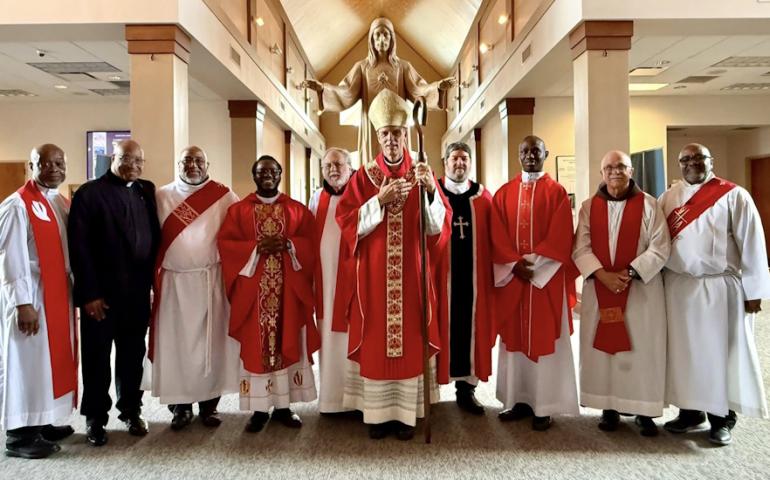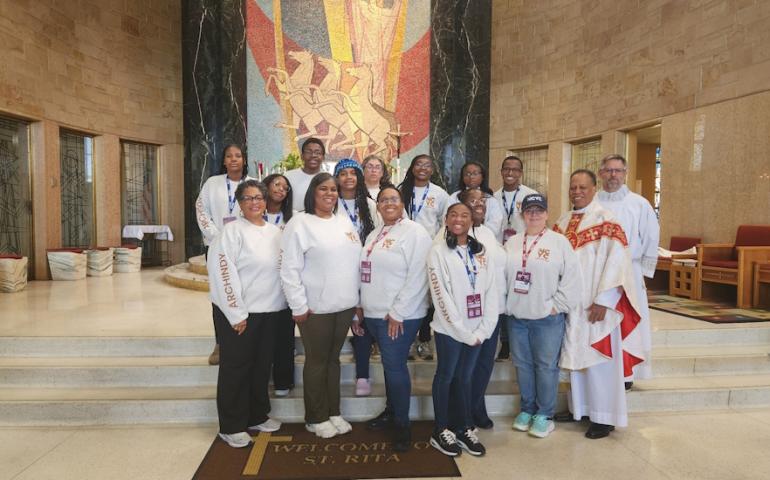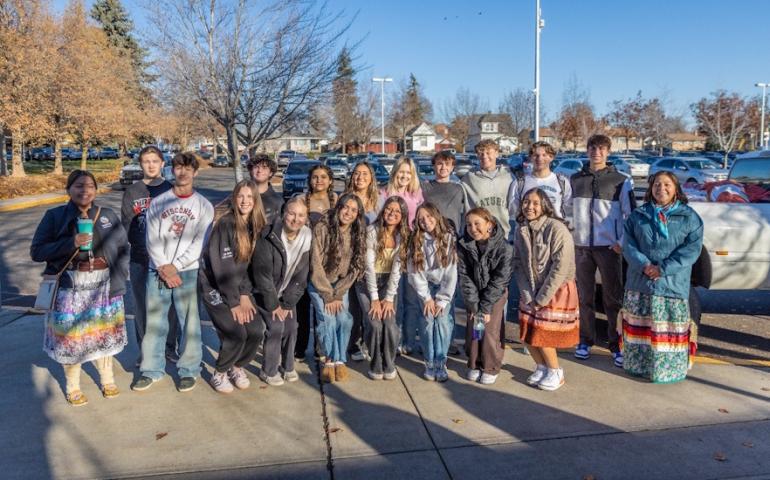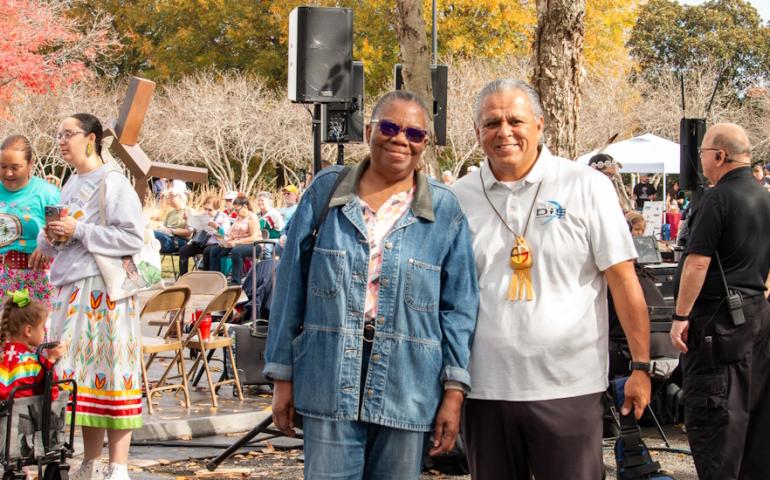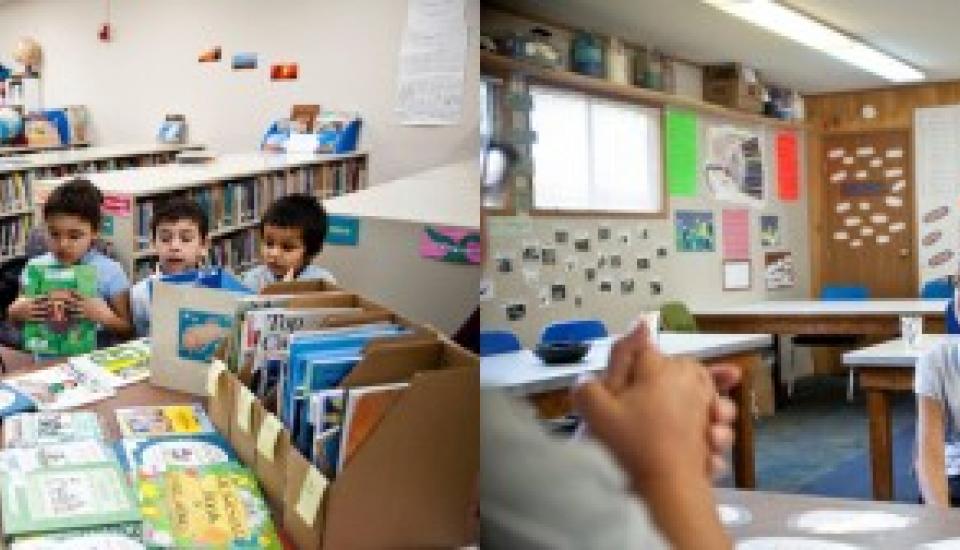
Francis Betz celebrated her 80th birthday in November and currently is the longest serving Missionary Benedictine Sister to serve St. Augustine Indian Mission. Sr. Francis served St. Augustine’s from 1978 to 1983, and returned to serve from 2001 and remains on staff today.
Sr. Francis, the eldest in a family of four girls, was born in Lauingen on the Danube, a 1000-year-old city in Bavaria, Germany. “Although I was interested in stories and reports of heroic missionaries overseas, the thought of a possible religious vocation came to me only after I made a three-day retreat for high school student.”, said Sr. Francis. Her father’s eldest brother entered the Missionary Benedictines of St. Ottilien and spent 40 years in South Africa. One of his two sisters was recruited by a visiting missionary from the United States where she joined the Benedictine Sisters at Ridgely, Maryland. “I was deeply touched by the spiritual message and the life of the monks, as I witnessed it, unaware that I found myself in the very place which had been the early home of the Missionary Benedictine Sisters whom I would join a few years later”, shared Sr. Frances.
During a similar retreat just one year later, Sr. Francis became convinced that God was calling her to religious life. She wrote to Tutzing Missionsschule, the high school where she would complete her studies before she told her parents of her plans. “I feared that they might stop me from pursuing, or even looking into such a future”, said Sr. Francis. On September 15, 1953, Sr. Francis crossed the convent portals and received the Mission Cross and made the long journey to continue her training in the American Priory at Norfolk, Nebraska. She would never serve in Japan because that mission was discontinued.
Sr. Francis has served a variety of roles over the years. She taught in a combined 5th and 6th grade classroom in Madison, Nebraska, and taught at the Assumption Academy at Norfolk Catholic High School and again at St. Leonard’s Elementary School before coming to St. Augustine Indian Mission in 1978.
From 1978 to 1983 Sr. Francis served as principal and teacher. St. Augustine’s was still a boarding school in those days. “We were like a big family living under one roof with our students. That experience was both invigorating and draining for us caregivers”, she remembers. “Before technology came along, we were able to do more hands-on projects. I remember during Lent, we would do bead-work and basket weaving with Native teachers. Every year we went to the Shrine Circus in Sioux City in a cattle truck, sitting on hay bales.”
After returning from an 11-year assignment teaching at a Zulu high school in South Africa, sr. Francis served two years as principal, then as school librarian to the present. She enjoys her position. “The children keep me young at heart and hopping. A little shot of ‘youth’ is welcome anytime because that helps me share some of my life experiences and acquired wisdom of 80 years so that our young people do not have to make all the mistakes of youth themselves. Rather, they can learn vicariously from my personal stories as well as from books about what is beneficial or harmful in life”, shared Sr. Francis.
“We are so blessed to have Sr. Francis and the other Missionary Benedictine Sisters serve our students. The valuable lessons these faithful women provide our students is invaluable to their spiritual growth”, said Director Fr. Dave Korth. “She might be eighty, but she makes us all feel young at heart.”
Native Language Learning Provides Immeasurable Gifts to Native Families (photo of child raising hand)
Students at St. Augustine Indian Mission have dedicated time each week learning their Native language, whether it be the Winnebago language or the Omaha language based on their Native heritage. The students spend time learning basic words and phrases that are important to Native customs. While the students enjoy their time, it can sometimes be hard to measure the impact. Native Language instructor, Dwight Howe, shared this story recently of a reaction of one of our parents.
As Mr. Howe was monitoring the end of the school day release time, one of the parents of a student came in and wanted to talk to Mr. Howe. The parent shared that her grandmother had just recently passed away but when she was alive, she would go visit her and her son, our student, would tell her all the Omaha words he was learning. Hearing him speak the Omaha language made her very happy. The parent said, “I want to thank you and let you know that you made my grandmother smile by hearing her grandchildren speaking the Omaha language.” Mr. Howe humbly accepted her thanks but was caught off guard by her comments.
“It was a very emotional moment, one that I will always remember. We now have 7,000 enrolled Omaha Native Americans but less than 40 of them are fluent speakers of the Omaha language. Teaching Omaha to the middle school students hopefully will have a positive impact on keeping our language alive and thereby keeping our culture intact., said Mr. Howe.




